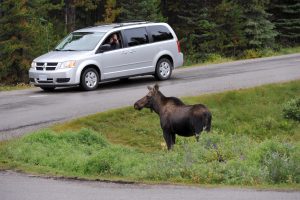There’s a new generation of outdoorsmen stalking wild game, but they’re not armed with bows or guns. Instead, they wield tripods and cameras. This movement represents a growing trend toward what Edward Putnam, the author of “Is Wildlife Viewing The New Hunting?,” calls “non-consumptive outdoor recreation.”
Putnam wrote about the trend in a recent issue of Backcountry Journal, the magazine of the non-profit group, Backcountry Hunters and Anglers. He observes:
In 1960, the US Fish and Wildlife Service counted almost 14 million hunting license holders in the US, making the sport one of the most popular outdoor activities in America. But that popularity has not kept pace with changing demographics. There’s nearly 140 million Americans today, but almost the same number of hunters.
But that doesn’t mean Americans are losing interest in nature or its bounty.
According to a U.S. Census report cited in the article, 22 million people identified themselves as wildlife viewers in 2011 compared to the 13.7 million registered hunters. From 2000 to 2007, four out of the five most popular outdoor activities had to do with photographing or observing nature. (The remaining activity was motorized off-roading.)
Hunting didn’t even make the list.
Backcountry Hunter and Anglers used the feature article to ask a concerning and possibly unpopular question: In the wake of this growing trend, what does this mean for hunting’s future? Will land managers and fish and wildlife agencies feel pressured to implement a less consumptive approach to conservation to accommodate the growing number of people who would rather simply photograph wildlife than put meat on their table?
Related: I Hunt Because …
Why Just Looking At Wildlife Isn’t Enough
You may have guessed why viewing wildlife isn’t enough, at least under the country’s current structure that tax hunters who purchase hunting equipment.
According to Putnam:
The gap between boots-on-the-ground conservation and the wallets of tourists presents a budgetary challenge to wildlife agencies. Most wild public lands are not managed for tourism and don’t have the road appeal that Yellowstone and Grand Teton national parks have, yet they are equally in need of money for fish and wildlife. Even if tourism could generate enough revenue, relying on Congress or state legislatures to appropriate it wisely seems wildly optimistic.
And what of the societal pressures to marginalize hunting through incidents like Cecil the Lion? Putnam makes some interesting points about that, too. How hunters resist this pressure and how they shape and tell their story will be the difference maker.
Read more at Backcountry Journal here.







